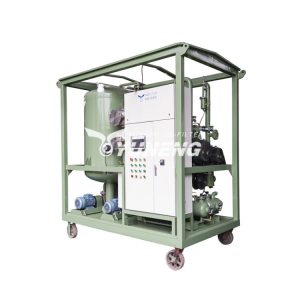
How to Judge the Quality of Transformer Oil From the Appearance?
- 2021-10-22
During operation, due to the influence of resin and sediments produced by pollution and oxidation, the quality of transformer oil deteriorates and the color will gradually darken. When the transformer oil is faulty, the color of the oil will also change.
At present, it has become an auxiliary judgment method to analyze and judge the transformer oil and the operation status of the transformer by the appearance of the oil. However, it is only a basic diagnosis method.
Physical Features of Good Transformer Oil

- clear and transparent
- with no precipitation, mechanical impurities suspended solids
- cotton-like substances
- color be light yellow or white.
Different Colors Correspond to Different Conditions of Oil
The color of transformer oil can be simply divided into 15 kinds. The colors from light to dark are white, light yellow, light yellow, yellow, dark yellow, orange, light orange, orange, dark orange, orange, light brown, brown, brown, brown, brown.
In addition, transformer oil would turn into turbid and whitish, oily black, and oily dark, when you find so, then the color is telling you the oil can not be used again without purifying. For instance, under normal circumstances, when the transformer oil is brown or dark brown, it should be labeled and should not be reused, and if it is turbid or whitish, it means that the oil contains water. The darkening of the oil color indicates that the transformer oil insulation is aging, this is the time to use a Transformer Oil Purifier. And when the oil turns black or even burnt, it indicates that there is a fault inside the transformer.

Therefore, by observing the appearance and color of the transformer oil, one can have a general understanding of the quality of the transformer oil, and make a preliminary guess as to whether there is a fault in the transformer, and select which experimental items need to be done based on the guess, so as to be as early as possible Accurately judge the latent fault of the transformer.
How Do the Oil Turn Into Different Colors and What to Do to Prevent It?
The oil sample is turbid and whitish: the increase in hydrogen content and the decrease of the breakdown voltage are two important characteristics of turbid and whitish oil. it may be caused by the moisture in the oil. Objectively, if the gas chromatographic analysis finds that the hydrogen content exceeds the standard, while the content of other gases is normal and does not change much, it can be roughly diagnosed as the internal water of the transformer is damp.
So it is necessary to remove the moisture of your oil regularly to ensure it won’t get into turbid and whitish.
The color of the oil sample is brown or brown: its acid value and water-soluble acid are basically close to or exceed the national standard. However, its chromatographic analysis does not have certain regularity.
In general, for darker-colored transformer oil, the chemical supervision test of the oil should be strengthened. Or it should not be reused and regenerate the transformer oil to prevent accidents.
The oil color of the oil sample is dark: judged according to its gas component content and the ratio of three, its fault type is a normal aging phenomenon.
In the analysis, the acid value and water-soluble acid are both seriously exceeding the standard. For the determination of the oil aging phenomenon, the increase of the acid value in the oil can generally be taken as an obvious sign.
The oily oil color is black: the increase in hydrogen and acetylene components is an important feature. The transformer turns black due to carbonization. As a result, the content of hydrogen and acetylene is significantly increased. It is recommended not to use oil with darkened oil. To prevent this problem occurs, it is better to operate supervision of tests on the carbon contained.





